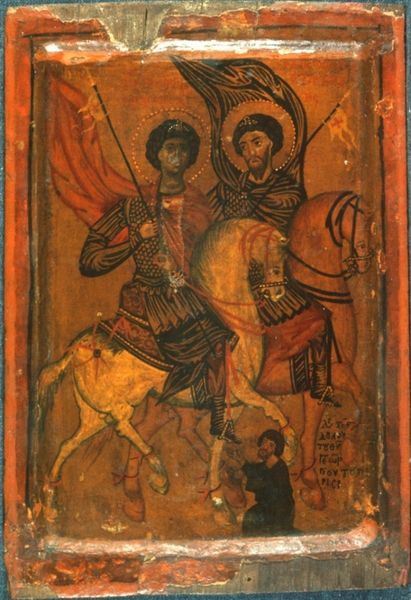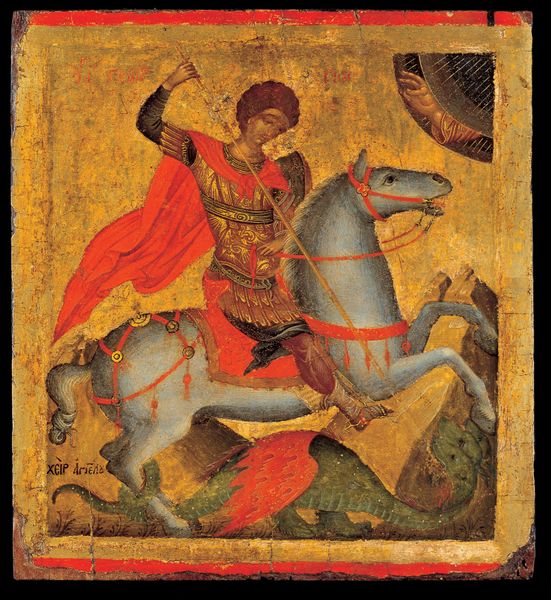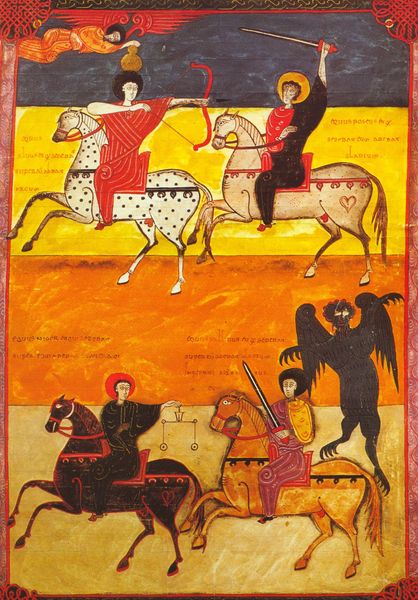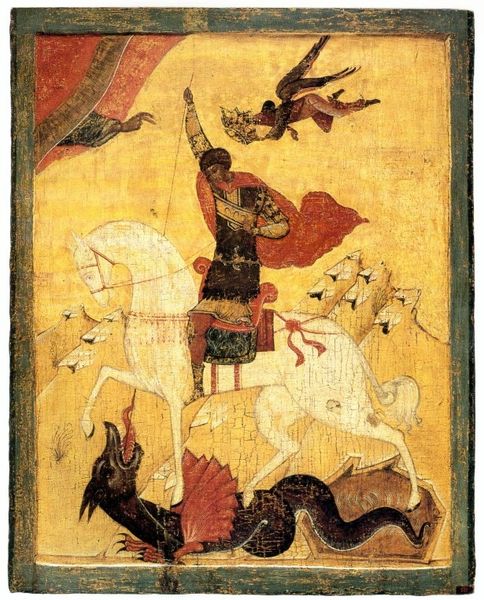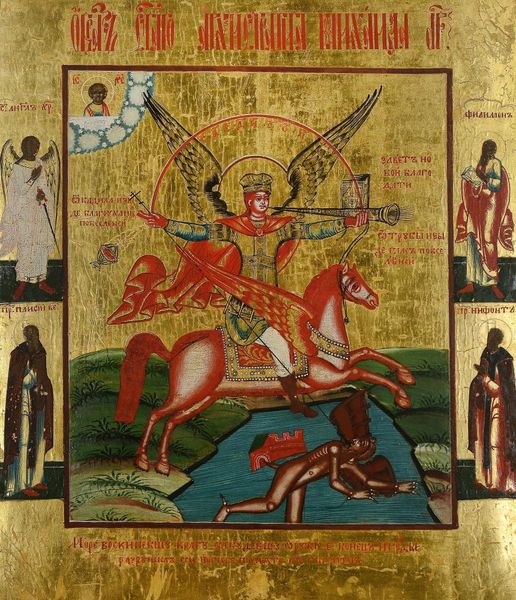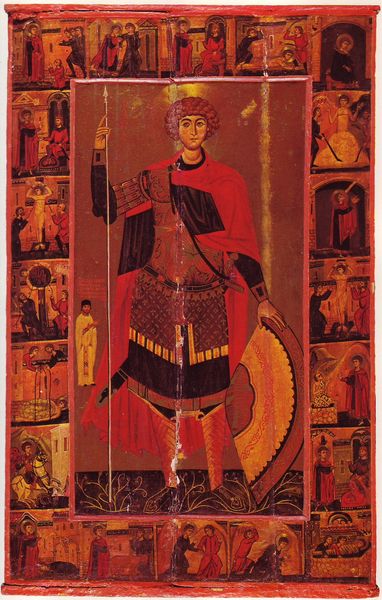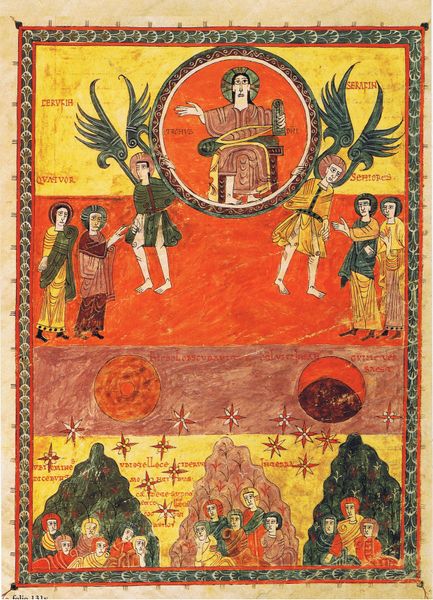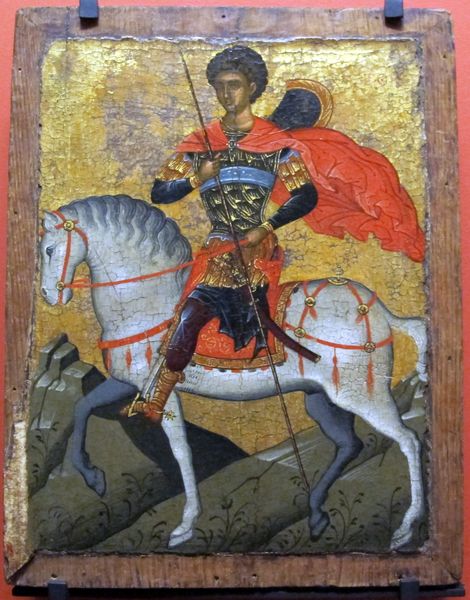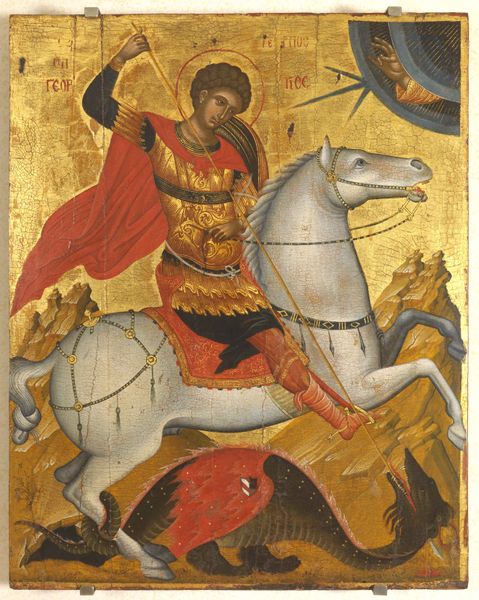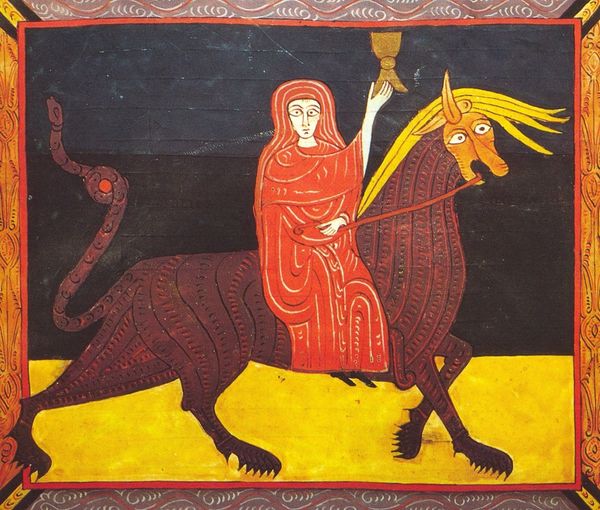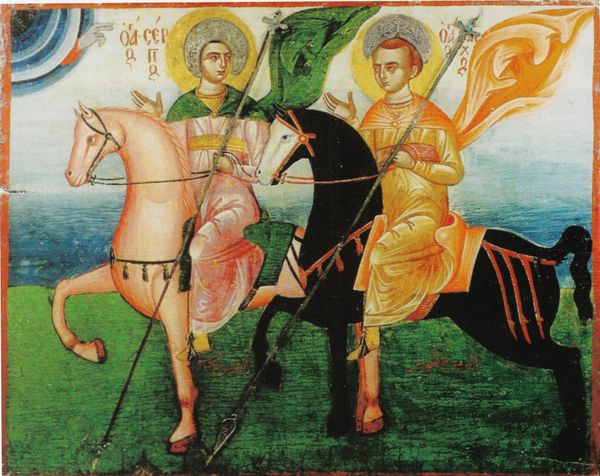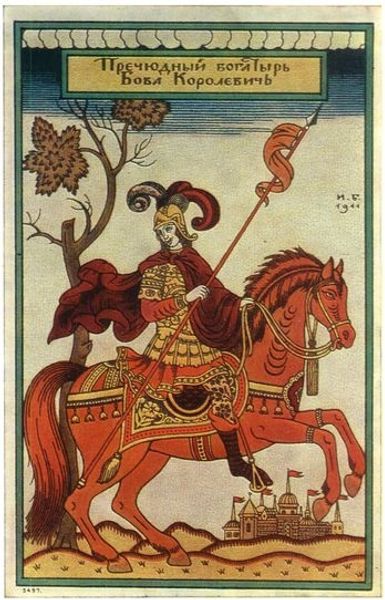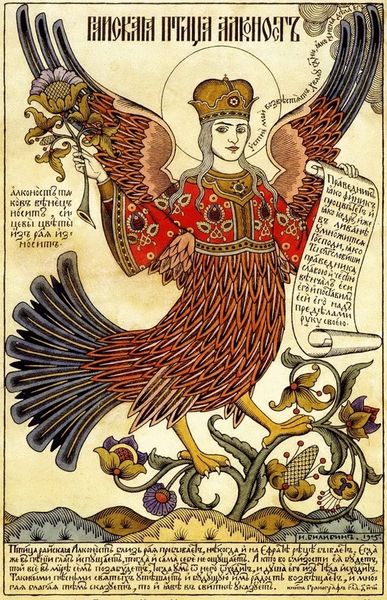
tempera, painting
#
byzantine-art
#
medieval
#
narrative-art
#
tempera
#
painting
#
figuration
#
naive art
Dimensions: 100 x 79 cm
Copyright: Orthodox Icons,Fair Use
Curator: This piece, titled "Archangel Michael Warlord," dates back to 1719 and employs tempera as its medium. It's truly striking, isn't it? Editor: It has a unique raw power. There’s a deliberate simplicity in the depiction, a sense of immediacy that suggests its importance to a specific community. What can you tell me about the context? Curator: As an Orthodox icon, the materials and the making were as important as the image itself. The preparation of the wooden panel, the grinding of pigments, and the application of gold leaf—each step was a devotional act, embedded with symbolic meaning that resonates deeply in Russian Orthodox traditions. Editor: And looking at this narrative, we see Michael, not as a distant divine figure, but intimately engaged in an ongoing cosmic struggle, trampling on chaos while perched atop his winged steed. What socio-political functions would depictions such as these have fulfilled at this point in history? How were ordinary folk engaging with art forms like these? Curator: Well, consider that Icons were not just artworks; they were objects of veneration, mediators between the earthly and the divine. Each component was often sourced locally through guild systems that carefully guarded knowledge, ensuring consistency while employing regional resources. There was both deep piety, and, quite practically, a local economic benefit intertwined within the creation of icons like this. Editor: Precisely. This depiction of Michael, piercing darkness with his spear, served not just as spiritual reassurance but also likely solidified communal identity against very real earthly adversaries. This wasn't passive imagery; it's deeply tied to the realities of power and conflict. How the gold reflects light to represent divine authority… It’s visual language crafted for engagement and action. Curator: Indeed, by emphasizing not only faith, but also the very material means by which faith takes visual form, we gain insight into the relationship between aesthetics and belief, skill and devotional expression. Editor: The icon gives visual form to a constant tension; how does a community collectively push back at structures of oppression and navigate real sociopolitical adversity through faith? Curator: Examining the making, material, and meaning of icons allows us to fully understand both its beauty, and its integral role as both object and symbol within society. Editor: A crucial reminder that art, in all its forms, is rarely detached from its surroundings; icons prompt critical dialogue on issues that impact humanity both past and present.
Comments
No comments
Be the first to comment and join the conversation on the ultimate creative platform.

